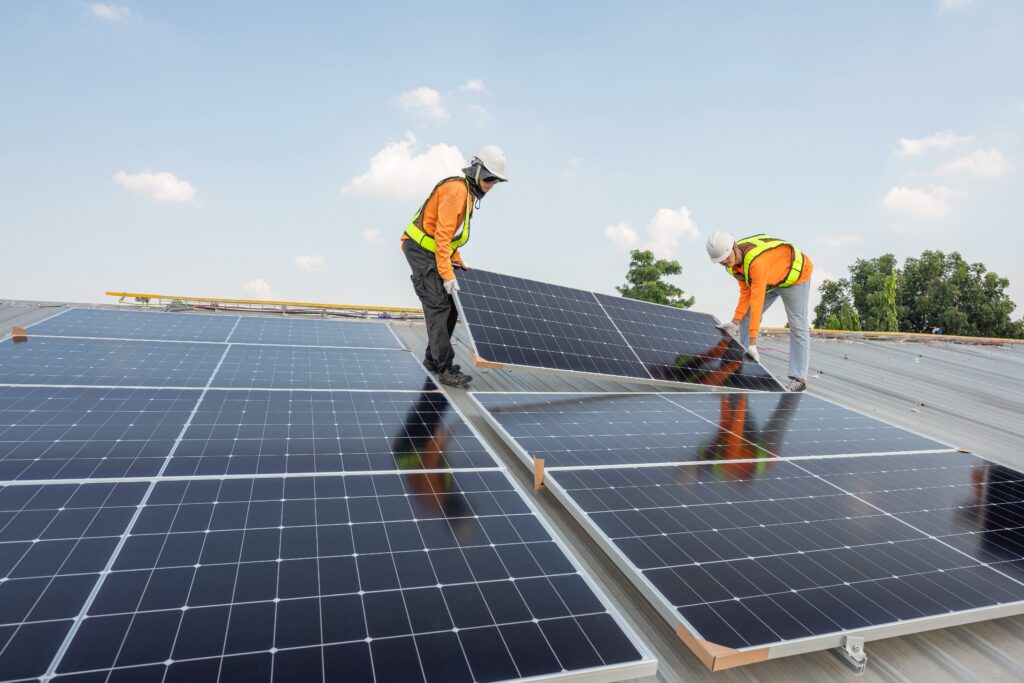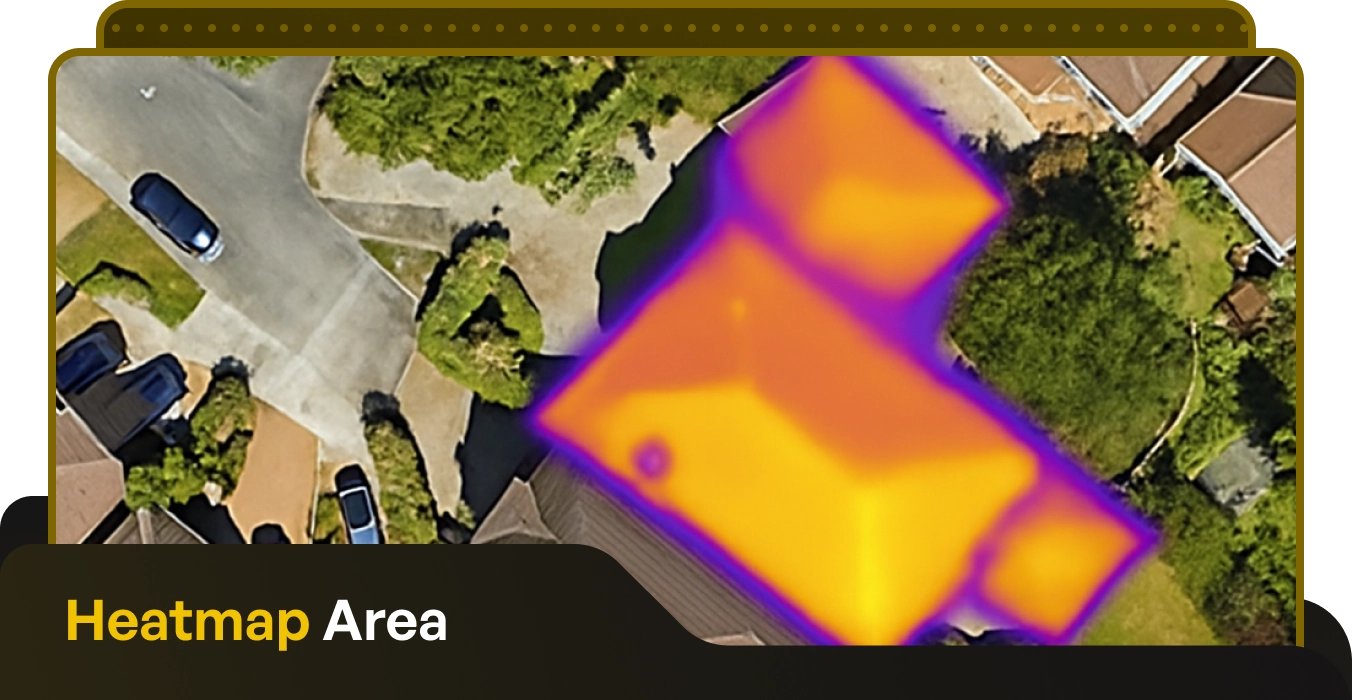Solar Panel Grant Application Guide for Homeowners

Written by: Briain Kelly
Published: July 10, 2025
Last updated: October 9, 2025
Reading time: 4 mins
The SEAI solar panel grant is one of the best and easiest ways to reduce the cost of getting solar panels for your home or business.
This Solar PV Scheme grant is available for almost all homeowners as long as they meet the relevant criteria.
Our guide will take you through the eligibility criteria and grant application process for the SEAI solar grants.
How much is the solar PV grant worth?
The residential solar PV grant from the SEAI is worth a maximum of €1,800 in 2025. The size of the grant awarded is determined by the number of solar panels being installed, and the power of the system.
- €700 per kWp up to 2kWp
- €200 per kWp up to 4kWp
Who can apply for the solar panel grant?
The grant is open to the following applicants as long as the property meets the other eligibility criteria.
- Private Homeowners
- Landlords who own the property
- Owner Management Companies
- Property Management Companies with authorisation from the OMC
What are the eligibility requirements for the grant?
In order for a property to qualify for the Solar PV Scheme, it must meet the following criteria.
- The property must be a private residence
- It must have been built and occupied before December 31, 2020
- The property must not have received any SEAI support for solar PV from this or any other scheme before.
Applying for the SEAI Solar PV Grant
The first step in applying for the SEAI Solar PV grant is to make sure that your home is actually eligible for the grant, meeting the criteria above.
If you are grant eligible, contact a solar installer and sign an agreement with them for the solar panel system they will be installing on your home. It is important that you have all the technical specifications of this.
Once you have a signed agreement, you can now apply for the SEAI solar grant, either through their online portal or via post.
You must wait for a Letter of Offer with approval for the solar grant before having any installation works done. Any work done before this will not be eligible for the grant.
The solar installer must apply to the ESB Networks for approval to connect the solar PV system to the grid. This application process, done with an NC6 form, can take approximately 20 days.
Once approval has been granted by the ESB, you can now have your solar PV system, the panels, inverter, and any extras such as a solar battery, installed.
The solar installer must submit all of the required documents once the installation has been completed such as a Declaration of Works Form.
Once the solar panels have been installed a BER Assessment of your home must be carried out. If you know when your installation will take place you can arrange a date for this ahead of time.
Once this has been completed you should receive the grant payment within 4 to 6 weeks.

What will you need to make a solar grant application?
You will need the following basic information about your home and solar plans to get started with the grant process.
- An email address for an online application or contact the SEAI at on (01) 808 20 04 or solarpv@seai.ie to receive a paper application form.
- Your home address, including its eircode.
- The year in which your home was built. This is determined by when the electricity meter was first connected. Contact the ESB Networks if you are unsure of this.
- Your Meter Point Reference Number. This can be found at the top of your electricity bills.
- The name of the company which will be installing your solar panels.
- The size of the solar PV system being installed in kWp.
- The BIC and IBAN for the account into which the grant will be paid.
Where do you send a solar grant application form?
If you are making your solar panel grant application with a hard copy rather than through the SEAI website, then the completed application form should be sent to:
Sustainable Energy Authority of Ireland
SEAI Head Office
3 Park Place
Upper Hatch Street
Dublin 2
Choosing a Solar PV Installer
In order to get the SEAI grant the company installing your solar panels must be chosen from the SEAI’s list of registered installers. Otherwise the work will not be eligible for grant support.
What if you change solar installer?
If you change to a different solar panel installer after receiving grant approval from the SEAI then a fresh grant application will need to be submitted.
Altering the Size of your Solar PV System
When you submit a grant application part of this will include the size of the solar PV system being installed.
If you change your mind after being approved for a grant and decide that you want to install more or fewer solar panels, then a fresh grant application will need to be made.
If the grant values have changed in the time between your first application and the second, then the grant you receive will match the second application.
Having Your Solar Panels Inspected
After you have your solar panels installed and submitted a request for payment, you may be selected by the SEAI to have your solar PV system inspected.
These randomly chosen inspections are to ensure that the installation work was carried out to the standard required by the SEAI, and to ensure that the system installed matches what was submitted with the grant application.
The following documents may be required if the SEAI inspects your solar panel system. These should be provided by the solar installer.
- Operation & Maintenance (O&M) Manual for Homeowner
- Basic start up, shut down, safety and O&M Instructions
- Test and Commissioning Certificate
- Safe Electric (RECI) copy of Certificate
- Completed ESB Networks NC6 Form
- Completed BER Assessment for the property
- Photographs of the installation
- Invoice describing works completed
- Datasheets for Solar PV Modules, Inverters and Mounting Systems
- Warranties for Solar PV Modules, Inverters and Mounting Systems
- Estimation of system performance
Receiving the Grant Payment
After the BER Assessment and possible inspection are carried out, and the documentation has been received, the solar grant will be paid by electronic funds transfer.
FAQs
Yes, the government has stated that the residential solar panel grant is going to continue being reduced each year and eliminated altogether by 2029.
For homeowners, it is likely that your chosen solar installer will help with the grant application process or handle it for you altogether.
If a registered solar installer is carrying out work on their own home, then only the material costs are eligible for the grant. Labour costs are not eligible.
The solar grant can be paid into the homeowner’s bank account or into another account, such as the installer’s. Solar installers may deduct the cost of the grant up front if it is being paid directly to them.
Solar Panel Grant Application Guide for Homeowners
Published: July 10, 2025
Last updated: October 9, 2025

Written by: Briain Kelly
Reading time: 4mins
The SEAI solar panel grant is one of the best and easiest ways to reduce the cost of getting solar panels for your home or business.
This Solar PV Scheme grant is available for almost all homeowners as long as they meet the relevant criteria.
Our guide will take you through the eligibility criteria and grant application process for the SEAI solar grants.
How much is the solar PV grant worth?
The residential solar PV grant from the SEAI is worth a maximum of €1,800 in 2025. The size of the grant awarded is determined by the number of solar panels being installed, and the power of the system.
- €700 per kWp up to 2kWp
- €200 per kWp up to 4kWp
Who can apply for the solar panel grant?
The grant is open to the following applicants as long as the property meets the other eligibility criteria.
- Private Homeowners
- Landlords who own the property
- Owner Management Companies
- Property Management Companies with authorisation from the OMC
What are the eligibility requirements for the grant?
In order for a property to qualify for the Solar PV Scheme, it must meet the following criteria.
- The property must be a private residence
- It must have been built and occupied before December 31, 2020
- The property must not have received any SEAI support for solar PV from this or any other scheme before.
Applying for the SEAI Solar PV Grant
The first step in applying for the SEAI Solar PV grant is to make sure that your home is actually eligible for the grant, meeting the criteria above.
If you are grant eligible, contact a solar installer and sign an agreement with them for the solar panel system they will be installing on your home. It is important that you have all the technical specifications of this.
Once you have a signed agreement, you can now apply for the SEAI solar grant, either through their online portal or via post.
You must wait for a Letter of Offer with approval for the solar grant before having any installation works done. Any work done before this will not be eligible for the grant.
The solar installer must apply to the ESB Networks for approval to connect the solar PV system to the grid. This application process, done with an NC6 form, can take approximately 20 days.
Once approval has been granted by the ESB, you can now have your solar PV system, the panels, inverter, and any extras such as a solar battery, installed.
The solar installer must submit all of the required documents once the installation has been completed such as a Declaration of Works Form.
Once the solar panels have been installed a BER Assessment of your home must be carried out. If you know when your installation will take place you can arrange a date for this ahead of time.
Once this has been completed you should receive the grant payment within 4 to 6 weeks.

What will you need to make a solar grant application?
You will need the following basic information about your home and solar plans to get started with the grant process.
- An email address for an online application or contact the SEAI at on (01) 808 20 04 or solarpv@seai.ie to receive a paper application form.
- Your home address, including its eircode.
- The year in which your home was built. This is determined by when the electricity meter was first connected. Contact the ESB Networks if you are unsure of this.
- Your Meter Point Reference Number. This can be found at the top of your electricity bills.
- The name of the company which will be installing your solar panels.
- The size of the solar PV system being installed in kWp.
- The BIC and IBAN for the account into which the grant will be paid.
Where do you send a solar grant application form?
If you are making your solar panel grant application with a hard copy rather than through the SEAI website, then the completed application form should be sent to:
Sustainable Energy Authority of Ireland
SEAI Head Office
3 Park Place
Upper Hatch Street
Dublin 2
Choosing a Solar PV Installer
In order to get the SEAI grant the company installing your solar panels must be chosen from the SEAI’s list of registered installers. Otherwise the work will not be eligible for grant support.
What if you change solar installer?
If you change to a different solar panel installer after receiving grant approval from the SEAI then a fresh grant application will need to be submitted.
Altering the Size of your Solar PV System
When you submit a grant application part of this will include the size of the solar PV system being installed.
If you change your mind after being approved for a grant and decide that you want to install more or fewer solar panels, then a fresh grant application will need to be made.
If the grant values have changed in the time between your first application and the second, then the grant you receive will match the second application.
Having Your Solar Panels Inspected
After you have your solar panels installed and submitted a request for payment, you may be selected by the SEAI to have your solar PV system inspected.
These randomly chosen inspections are to ensure that the installation work was carried out to the standard required by the SEAI, and to ensure that the system installed matches what was submitted with the grant application.
The following documents may be required if the SEAI inspects your solar panel system. These should be provided by the solar installer.
- Operation & Maintenance (O&M) Manual for Homeowner
- Basic start up, shut down, safety and O&M Instructions
- Test and Commissioning Certificate
- Safe Electric (RECI) copy of Certificate
- Completed ESB Networks NC6 Form
- Completed BER Assessment for the property
- Photographs of the installation
- Invoice describing works completed
- Datasheets for Solar PV Modules, Inverters and Mounting Systems
- Warranties for Solar PV Modules, Inverters and Mounting Systems
- Estimation of system performance
Receiving the Grant Payment
After the BER Assessment and possible inspection are carried out, and the documentation has been received, the solar grant will be paid by electronic funds transfer.
FAQs
Yes, the government has stated that the residential solar panel grant is going to continue being reduced each year and eliminated altogether by 2029.
For homeowners, it is likely that your chosen solar installer will help with the grant application process or handle it for you altogether.
If a registered solar installer is carrying out work on their own home, then only the material costs are eligible for the grant. Labour costs are not eligible.
The solar grant can be paid into the homeowner’s bank account or into another account, such as the installer’s. Solar installers may deduct the cost of the grant up front if it is being paid directly to them.
Solar Energy Saves Households Thousands in Electricity Costs
Take our 2-minute questionnaire and find affordable solar options to suit your budget and lifestyle.



